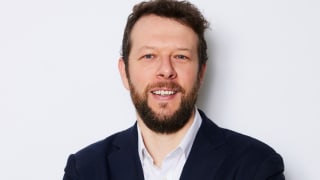Helsinki: The city of the future
If you’re looking for the City of Tomorrow, then you need look no further than Helsinki. Already world-renowned for their digital innovation, the city continues to push the boundaries of what is possible, pioneering the way for other destinations. Laura Aalto, CEO at Helsinki Marketing, shared with us how they built a brand on a foundation of innovation and openness, and what’s next for the trail blazing city.
Thanks for joining us, Laura. We just have to start by saying, the Virtual Helsinki city… just wow. It’s an amazing project that’s clearly been years in the work but couldn’t have come at a better time. What was it like pulling off Finland’s largest virtual festival?
It all starts with the City of Helsinki’s strategy. Helsinki wants to be a global leader in digital innovation, so we focus on really understanding how customer behaviour is changing and how we can use digital innovation to create better services for locals and for visitors. It’s not just about making things digital; true digitalisation has to be human first. So, then we have to ask how we as a DMO can embed this human-centric digital innovation in all of our activities. We have a number of different initiatives, such as MyHelsinki, the Helsinki WeChat programme and Think Sustainably, but the bottom line is always about helping people.
The Virtual Helsinki project is something that we started two years ago. It’s based on the fact that there is a very detailed 3D city model of Helsinki that’s available as an open source data – it’s something that the city has provided. And there was a local VR studio who were excited by this data and started to build a highly sophisticated virtual reality city experience based off it. Because the whole Virtual Helsinki is coded – instead of based on 360 video or photos – it gives you a lot of freedom. You can travel in time or space, there are all these different ways that you can use it.
For us though, it was about not only envisioning the future, but making it. Very often in this business you hear people asking, “VR is very nice and all, but where’s the money?” Well, it’s not there yet, and there’s nobody telling you how to do it, but instead you get to design and create the business model yourself. I think all of us destinations need to be a lot more innovative in terms of making the future and not only reacting to it.
And of course, it all ties into Helsinki’s city brand of being a digital testbed – large enough to make an impact, small enough to make the boldest ideas possible. Do you have any other initiatives that you’re planning on launching over the coming months to mitigate the impact of COVID-19?
Most of the activities we’ve been doing as a result of COVID have been linked to the Virtual Helsinki platform. For May 1st, we had a gig in the Virtual city from the rap band JVG, which attracted 1.5 million people in attendance. And then the media coverage was more than half a billion, so it really grew into a huge story. It’s bigger than just organising a gig – it really talks about what the city believes in. And then we had another concert by Alma, a leading female artist in Finland. That took place last week on Helsinki day, and it was super exciting. But now we’re going to add some new layers to the platform. We’re trying to find out how much we can actually do with it. Not everything will succeed, but it’s important to try and to understand how we can interact in this new virtual reality.
Of course, we’ve done the things that other destinations have been doing: talking with our stakeholders, encouraging locals to use more local services; looking to our domestic markets. But I think this focus on Virtual Helsinki is part of finding our way out of this crisis.
This was part of your 2020 vision strategy for Helsinki. From the outside, it seems like you’ve far surpassed your original brand strategy that you launched in 2016.
Since the marketing and brand strategy process that was conducted from 2015-16, we’ve had a municipal election and a new city strategy for Helsinki. It’s actually very in line with our marketing strategy, so there’s nothing new coming in, but there is an even stronger focus on strengthening Helsinki’s international recognition and appeal – particularly around digital innovation. That wasn’t originally on the city’s agenda when we were building our marketing strategy, so that’s helped push our strategy further.
This is an open society. Our city is built on trust, innovation, and openness. The things we come up with here are things that we want to share with the rest of the word, and that’s really at the heart of our brand: making an impact on a global scale. We recently had an international workshop for events and meetings on ‘The Helsinki Method’. It’s basically a model of how to put people at the core of virtual events, because we’ve noticed that for many, it’s more about the technology than the people who should really be the focus. By making this an open platform, an open way of working, it helps to communicate the Helsinki brand values because we’re sharing the information that we’ve come up with.
What were you using to track and measure your progress?
This is something that we’ve not been so successful with. When we started building the Helsinki brand more systematically, we noticed that we lack international recognition; we’re an underdog brand. We lag along way behind cities like Copenhagen and Stockholm who’ve been building their brands for much longer, and of our 6 million euros yearly budget, about half of that goes on fixed costs. So, we only have 3 million euros to build a brand internationally with our activities.
We decided to focus on two things. One is digital innovation – creating services that are so appealing that they make a story of their own as well as serving the customer. And the other was to focus on earned media. This has worked fairly well in recent years, and of course we have KPIs like value and content of media attention, the number and geographies of our website visitors, how people interact with us in social media… Right now, we’re in the process of creating more general, overarching KPIs that will work across the Helsinki brand and the whole city. We just kicked off that project last week.
So, what’s next for Helsinki?
I don’t have a particular project that I could talk to you about at the moment. I think we’ve succeeded in communicating a certain kind of edginess to Helsinki. We’ve found a spot as a city that is all about looking forward. I believe this in the future, it will be even more important to include a human-centric approach in whatever you’re doing; as apart of the Helsinki city strategy, we will still have a focus on digital innovation and fighting the climate crisis, but we’ll put more emphasis on these and embed a human-centric approach in our activities.
One mistake that many cities make is that they think they need to be for everyone. That they need to reach every single person on this planet – but that’s not the point. We need to be the best destination, the best city, for those who share our values and for whom we are the best city. And then to target those people more precisely. We don’t need everyone here, but we do need those that share the Helsinki mindset.
We’ve been looking at future trends and understanding how customer behaviour is changing, and something that comes up strongly is purpose or value-based marketing. I think all cities need to be better in communicating the values that they carry and that their activities and marketing are based on. There’s an amazing possibility for city brands – for commercial brands, it might be harder to believe that they’re really living the values they’re trying to sell to you. But cities are public entities – this value-based idea is at the very core of cities already because we’re the coming together of a community.
Speaking of future trends, it’s clear we’re going to see tourist behaviour change post-pandemic – at least in the short-term. What trends are you expecting will become more prevalent in the future as a result?
Sustainability is an area that we’ll be focussing on even more. We have two core goals at Helsinki – one is being a global leader in digital innovation, and the other is being a global leader in fighting the climate crisis. In terms of tourism, I think that we might be travelling less, but that we’ll pay more attention or spend more in order to ensure that our travels are closer to the values that we carry with us. In that sense, I think that cities need to be a lot more open and transparent around what they’re doing.
It’s interesting in terms of everyday life as well. In recent years, we’ve somehow built a barrier between the city and the countryside. Now that we’re entering an age where remote work is becoming the everyday, we can have the dual identity of someone who is living the city and someone living in the countryside. We can have much more flexible identities.
It certainly seems that we’re at a tipping point for sustainability. On the one hand, there are signs that several cities are backing away from addressing the challenge in favour of a quicker economic recovery, while others are using the chance to make really positive changes. What role do you think cities will play in the next five years of global development?
It’s been really interesting to watch. In Finland, the national government has been leading the fight against COVID, but all of the concrete actions have been happening at a city level. We implement what the national government decides. It’s been exciting to watch how cities are stepping up to the challenge.
For instance, our 1st May concert that we organised on the virtual city platform with JVG was actually a solution to a problem that we were having. The first day of May is always a major celebration here – it’s the beginning of the summer season and everyone goes to the parks to celebrate. But this year that was right in the middle of the COVID-19 crisis, and we needed to have people stay at home. So, we created something so exciting, so new, that is made them want to stay at home. It really paid off – people did stay at home – but in addition, we were able to turn it into part of our brand story. We showed that we were such an innovative city that we could come up with ideas like this. It’s still built on our longer-term strategy.
The ‘Think Sustainably’ app that you’ve designed is a great step towards putting social responsibility and community action in the hands of your residents and tourists. Do you have a tip for other destinations looking to engage their community in building a sustainable, resilient future?
Traditionally, brand building is about control, but when you’re building a brand for a city, a community? You need to let that go. You need to give people access and ownership of the brand. This was a very clear moment for myself when I realised that that the core of our actions is to make our people happy and proud. And even though many of the brand management rules can be used within the city context, this is very different to a commercial brand.
That community involvement was key to the ‘Think Sustainably’ service. We’ve talked during the past couple of years about the idea of nudging. How do you market in a way that changes people’s behaviour? The ‘Think Sustainably’ model is based on criteria built by a local think tank and it nudges local providers, residents and visitors to choose more sustainably. Then we build visibility around the service.
And it’s seen results. It’s really changed the way that people act – particularly for service providers, as there’s an additional incentive of being highlighted as part of our marketing activities. They want to change the way they behave. For locals and visitors, it’s more obvious. We’ve given them a service that makes it easy for them to choose more sustainably. It goes back to really understanding people and their behaviour which is key to going forwards sustainably. It’s still activity, but we’ve stopped it being labour.
As one of our jurors for the 2020 City Nation Place Awards, are there any predictions you’d make about the entries you’ll likely be seeing? Are there any trends you expect to see?
There’s a new category, Best Use of Data, which is very exciting. We’ve just come up with a new data strategy for the City of Helsinki, so seeing how others have used data and bought the creative edge to their work is something I’m very interested in. But I’m also curious to see what other cities and destinations have come up with in response to the COVID crisis. I’ve been following it quite carefully, but I’m eager to see what new innovations there might be and how cities not only reacted to the crisis, but built something out of it. A crisis is always a possibility for something new.
This is very exciting, though – I’m super excited to be involved. I think it’s really important to bring cities and destinations together like this, because it’s only by seeing what others are doing that you can raise the bar for your own activities. I’m looking forward to reading the entries!
Find out more about the 2020 City Nation Place Awards.
Related reading:
WeChat MyHelsinki | Case study
Think Sustainably | Case study
Is digital transformation the key to successful place branding?
What does 5G mean for place marketing, placemaking and place branding?









